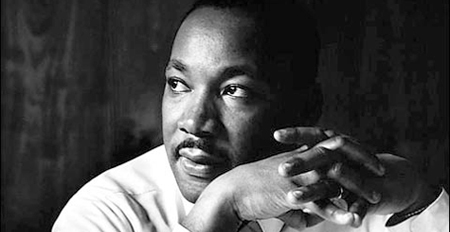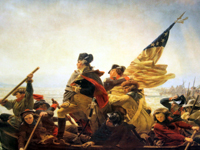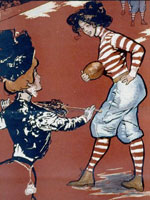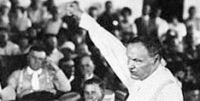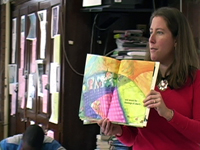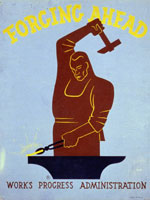Examining Adolescent Stories About Racial Diversity

In her article “Adolescents’ Perspectives on Racial Diversity in U.S. History: Case Studies from an Urban Classroom,” Terrie Epstein looks at how different racial groups are incorporated into historical narratives about the American past. She describes interpretations that address the “great paradox” where both democratic ideals and gross inequalities coexist, and asks, how do students make sense of this story? How, she asked in this study, do student views about race shape the way they understand the historical experiences of racial groups?
Epstein, a professor in the School of Education at Hunter College in New York, analyzed the end-of-year historical narratives of ten 11th graders—five African Americans and five European Americans. She was interested specifically in students’ explanations of three components: racial groups’ experiences, the government role in shaping these experiences, and the existence of a common national history or identity.
She asked each of the students to select the 20 most important historical actors and events from a set of 51 captioned picture cards and explain their choices. What Epstein found was that adolescents’ own racialized identities significantly influenced how they understood history. White students and African American students generally understood the historical experiences of racial groups through distinct historical narratives—one of expanding freedoms, and the other of ongoing racial inequality.
Epstein found that white students generally told positive stories about a nation shaped by those of European descent—a nation that from its inception represented the principles of individual rights and democratic rule. When explaining events directly related to African Americans, Indians, and women, students recognized that these group’s members lacked fundamental rights. Nevertheless, each student constructed a national history and identity in which all Americans shared birthrights to democratic rights and protections and these rights had expanded over time.
African American students tended to create stories of American history characterized not by expanding freedoms, but by relations of racial domination and subordination. African Americans were at the center of their stories, fighting for freedom and equality; white historical figures, on the other hand, were significant as oppressors or as allies in that struggle. Overall, these students constructed a distinct historical narrative in which democratic principles and practices only applied to whites and racial oppression marked the experiences of African Americans, Indians, and Japanese Americans.
How might history teachers begin to think about synthesizing the seemingly contradictory historical themes of expanding democracy and ongoing racial inequality? Epstein suggests that history teachers help students understand that particular forms of democracy and racial inequality existed in every historical period. She concludes that discussions of the indivisible legacies of democracy and racial hierarchy might enable young people to construct narratives in which the racialized extensions and exclusions of democracy marked all Americans’ experiences and perspectives.
- Work to uncover the narratives about the United States that your students bring to your classroom. You might ask students to do a task similar to Epstein’s where students identify significant events and people, or ask students to free-write about the story of the American past.
- Periodically, throughout your class, ask students to revisit these tasks so you can continue to learn more about how your students are constructing the American past.
- Deliberately plan ways to challenge students’ oversimplified narratives. Include historical episodes that conflict with students’ ideas or demonstrate how multiple themes and conflicting ideals can exist within a group or movement.
- For each historical period, spend some time looking at the varied experiences of different groups and considering how and why these experiences differed.
- Help students recognize change over time and how it happens. Ask:
- “What rights and freedoms did various groups of people have at this time?”
- “How did that represent a shift (or not) from previous historical periods?”
- “How can we explain these shifts and constancies?”
The following examples illustrate pieces of students’ oversimplified narratives of “expanding freedoms” or “ongoing racial inequality.”
Andrea’s perspective on American history:
On the Founding Fathers: “People who started country; made the rules and regulations. Decided how everyone was going to live, like the moral values. Everyone looked up to them; role models of that time.”
On the Declaration of Independence: “How we got our freedom from the British”
On the Constitution and the Bill of Rights: “The backbone of today. All our amendments and rules were started from the Constitution. Our freedoms; freedom to bear arms and speech.”
Maya’s perspective on American history:
On the Founding Fathers: “Group of men formed the Constitution. When they made the Constitution, they didn’t include black people. They were just thinking about themselves, wanted to better themselves.”
On the Declaration of Independence: “How does it relate to black people?”
On the Constitution: “Sounds good when you read it, but how does it relate to black people?”
On the Bill of Rights: “I can’t say they applied to black people because there was still slavery, lack of freedom for black people.”
Epstein, Terrie. “Adolescents’ Perspectives on Racial Diversity in U.S. History: Case Studies from an Urban Classroom.” American Educational Research Journal 37(1) (2000): 185214.

